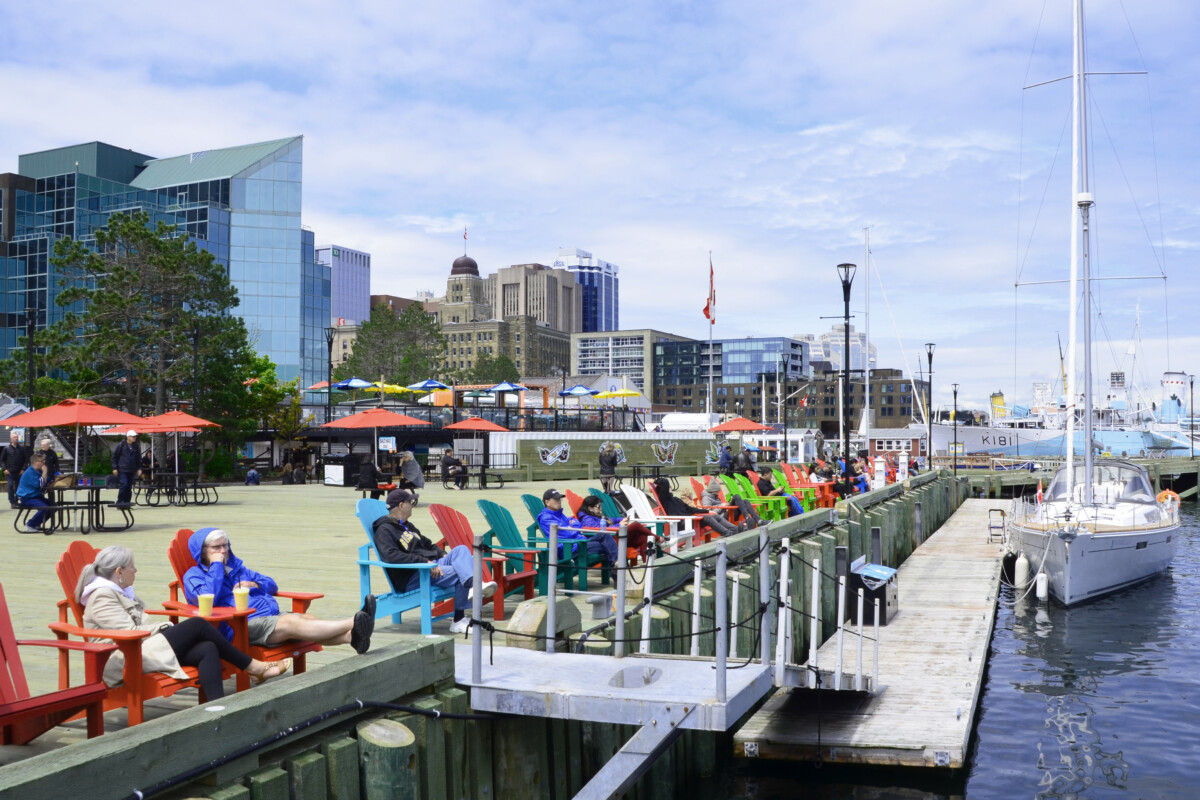Will we go to Halifax? Will we not go to Halifax? That was the question on our trip to the Canadian Atlantic Provinces. Out-of-control wildfires near Halifax forced the evacuation of 16,000 people in the weeks before our trip.
Fortunately, cooler weather and rain quelched the fires by the time we arrived in Canada. However, we had already rearranged our itinerary twice (and almost canceled the entire trip). If we drove the Cabot Trail in one day, we could spend a good portion of a day in Halifax and Peggy’s Cove. We were so close it would be ridiculous not to visit. After all, Halifax isn’t on the beaten path as many US carriers no longer fly to the airport.
Halifax
Founded in 1749, the seaport town of Halifax became a battleground between the British and French for over a century. With little valuable farmland, the city existed more as a military stronghold, especially after the Revolutionary War. With its natural, ice-free harbor, Halifax later grew into an important trade, cultural, and ship-building center and remains the largest city in the Maritime Provinces.
Waterfront
The hub of activity in Halifax centers around the downtown area with a 2.5-mile waterfront. Park in one of the many public parking decks and walk on the boardwalk for the best people-watching, restaurants, shops, and galleries.

At the south end of the boardwalk resides the Halifax Seaport Farmers’ Market, continuously running since 1750, and the Canadian Museum of Immigration. Near Bishop Landing, we walked passed the Drunken Lamposts sculptures and bright orange hammocks. Almost in front of the Maritime Museum, kids climbed on top of the Wave, the iconic public art piece commissioned in 1988.
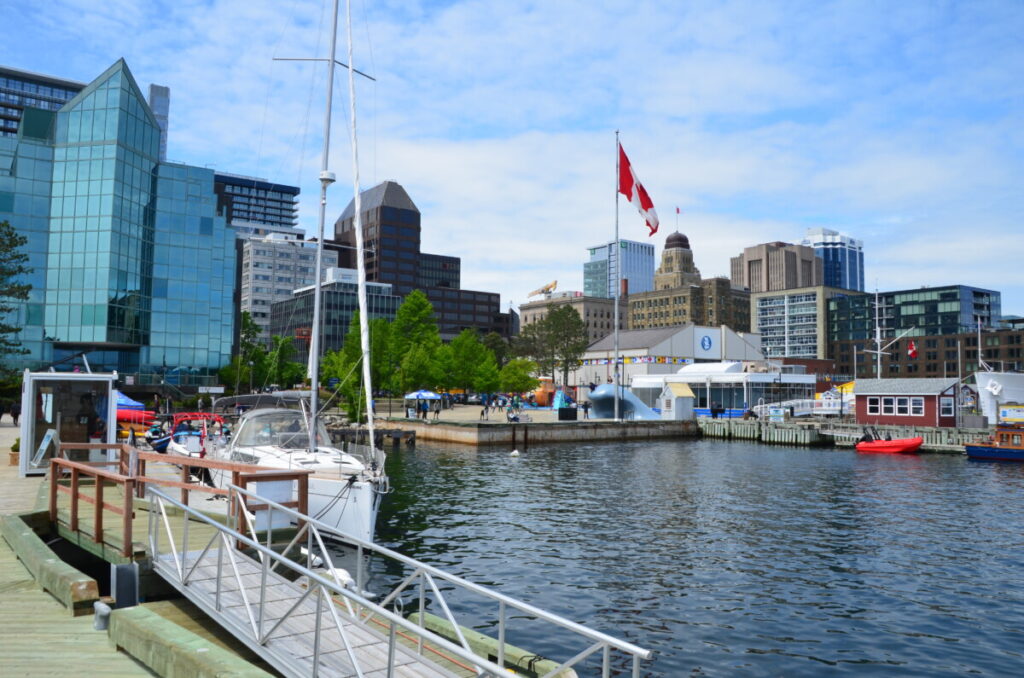
Maritime Museum of the Atlantic
Ask anyone who has been to Halifax and they will mention the Titanic Museum. While actually called the Maritime Museum of the Atlantic, the waterfront museum encompasses so much more!

On the first floor, visitors walk past models used in the “Theodore Tugboat” television series. Theodore and his friends reside in the Big Harbour, based on the Halifax Harbour. Other exhibits include a large room containing Canadian-built small craft vessels, a model of the Robertson Ship Chandlery that served the boating industry until 1976, and a first-order Fresnel lens in operation for 60 years from the nearby Sambro Lighthouse.

Upstairs, the Shipwreck Treasures exhibit highlights just how dangerous the waters of Nova Scotia could be for sailors. Artifacts included wine bottles covered in algae from the Daniel Steinmann, which sank in 1884. While not a shipwreck, a mess kettle and chest from the USS Chesapeake are displayed. The British warship Shannon overtook the Chesapeake during the War of 1812 and sailed both ships to Halifax.
Titanic Exhibit
When the RMS Titanic struck an iceberg and sank in the North Atlantic Ocean in April 1912, the White Star Line sent four cable ships to recover bodies. Sadly, less than 25% of the bodies were recovered. Of that amount, about half are buried in a cemetery outside Halifax. Many of the crew from these cable ships brought back pieces from the ship.
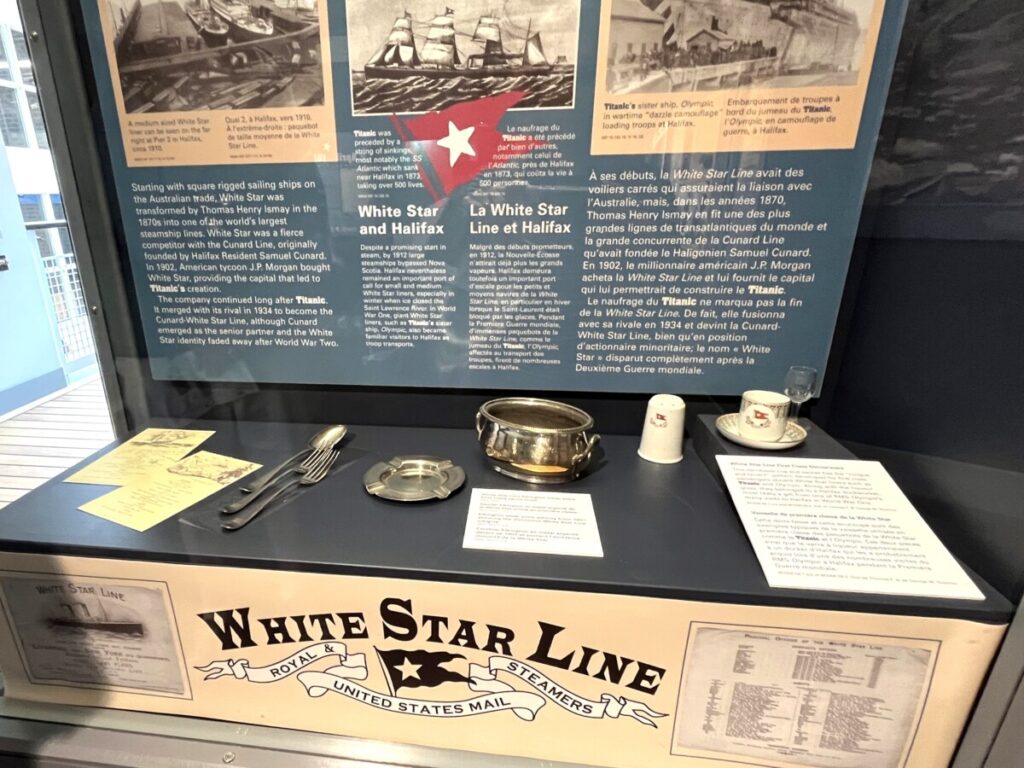
The museum displays these items including a piece of the oak post from the Grand Staircase, a pair of children’s shoes, a medicine cabinet, and a deck chair. Pictures of the recovery and identification effort and a model of the ship accompany the exhibit.
Halifax Explosion
The biggest event to rock Halifax occurred on December 6, 1917, when two steamships collided in the harbor. Over 1,700 people lost their lives and another 9,000 sustained injuries. The museum produces an excellent exhibit about the tragedy, considered the largest pre-atomic explosion, with photos, stories, maps, and other artifacts.

The Explosion of Halifax began when SS Imo from Norway traveled out of the harbor through a tight spot called the Narrows in the east lane, instead of the usual west lane. The SS Mont-Blanc from France (which carried explosives for WWI) proceeded into the harbor through the Narrows in the east lane. Despite whistles and signals, the two ships collided.

At the time of the collision, residents were carrying out routine daily activities at schools, offices, and homes. Despite the efforts of bystanders who tried to put out the fires, the ships exploded 20 minutes later. Many residents watching the fire from windows experienced significant eye injuries due to flying shards of broken glass during the blast. In fact, more people lost at least one eye than suffered broken bones. You can learn more about this tragedy at the Nova Scotia Archives website here.
Halifax Public Gardens
From the waterfront area, the only way to go is uphill. Passing blocks of downtown, we reached the Citadel. Due to time constraints, we decided not to tour the inside. Instead, we headed to the Halifax Public Gardens a few blocks away.
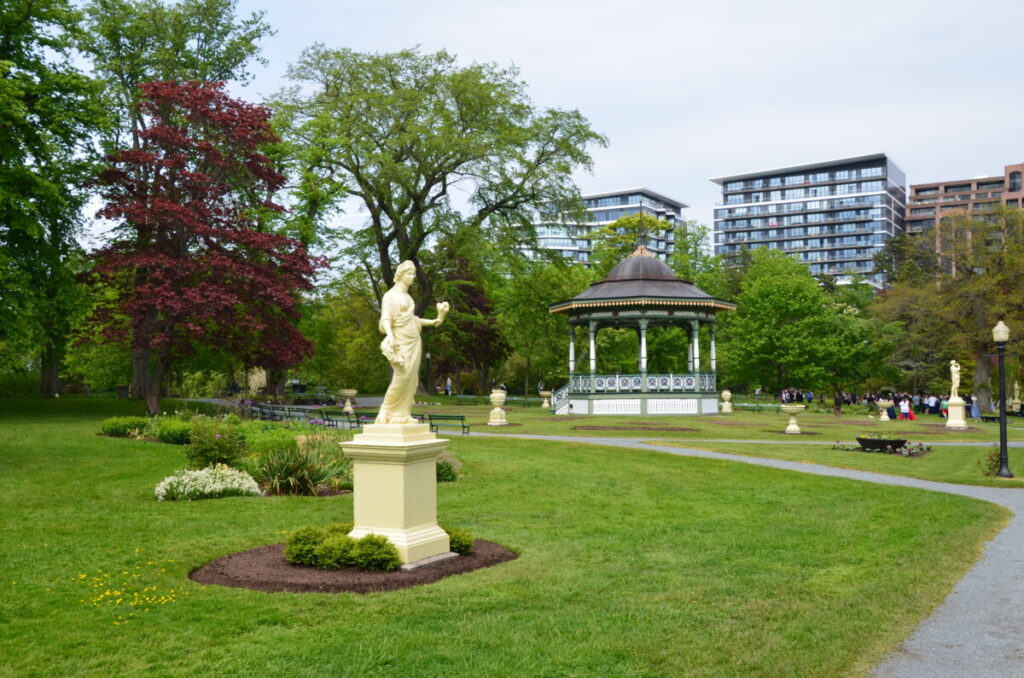
Known as the oldest Victorian garden in North America, the Halifax Public Gardens officially began in 1874 with the combination of a garden run by the Nova Scotia Horticultural Society (1836) and an adjacent city-owned garden (1866).
As we entered the wrought-iron gates, we saw large groups of teenagers posing for prom pictures. Despite its location next to downtown, the 16-acre garden provided quiet solitude as we walked past a bandstand and a pond before reaching the Victoria Jubilee Fountain, dedicated to the queen in 1897. Gardeners were swapping out flowers for the upcoming season so we didn’t see a lot of color. Instead, we enjoyed the tree-lined paths and rich history.
Peggy’s Cove
If you visit Halifax, try to get to Peggy’s Cove just about a one-hour drive away. The picturesque fishing village with a lighthouse remains one of Nova Scotia’s favorite tourist draws and is worth a side trip.
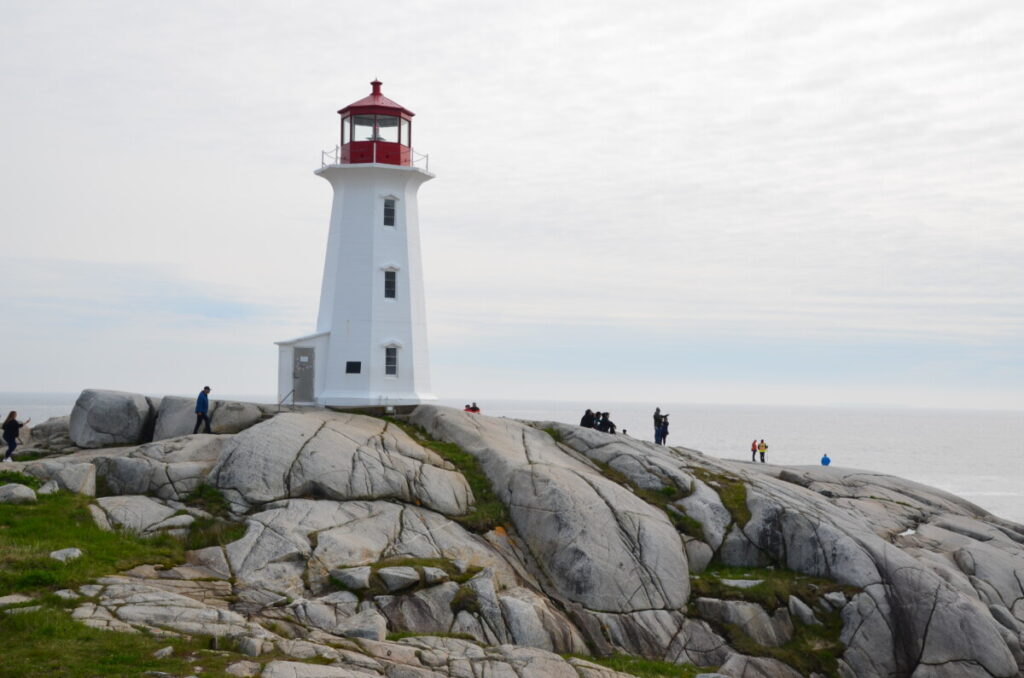
Who is Peggy? Historians believe the cove received its original name, Margaret’s Cove since it lies at the mouth of St. Margaret’s Bay. Over time, locals shortened the name to Peggy, a nickname for Margaret. Some people believe an early immigrant, William Rodgers named the cove after his wife. Others believe Peggy was a survivor of one of the many shipwrecks in the area.
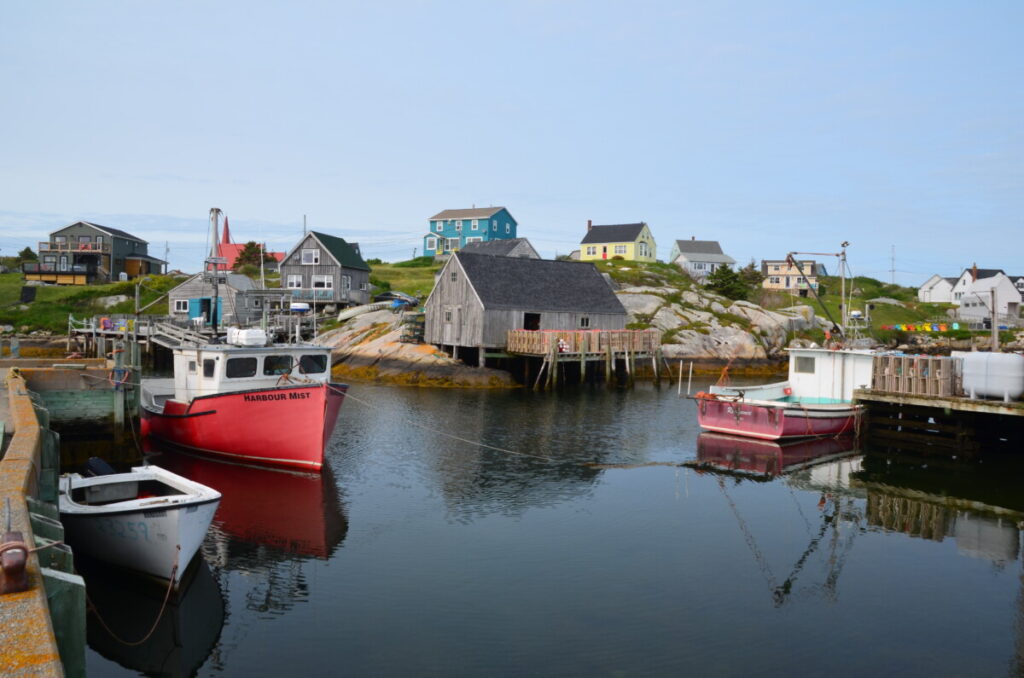
We arrived just before dusk with few crowds. Later that evening, the B&B owner told us Peggy’s Cove gets crowded with hundreds of people in the summer months. With only 30 residents, you won’t find tons of restaurants. Instead, Peggy’s Cove offers a tranquil setting hearkening to a simpler time.
Conclusion
You can spend a day or a week in the Halifax area. If you can only see a few things in the city (i.e. you’re on a cruise with limited shore time), I recommend touring the Maritime Museum, walking on the Waterfront Boardwalk, and a trip to Peggy’s Cove. If you have more time, try to visit the Halifax Citadel National Historic Site and Public Gardens.
